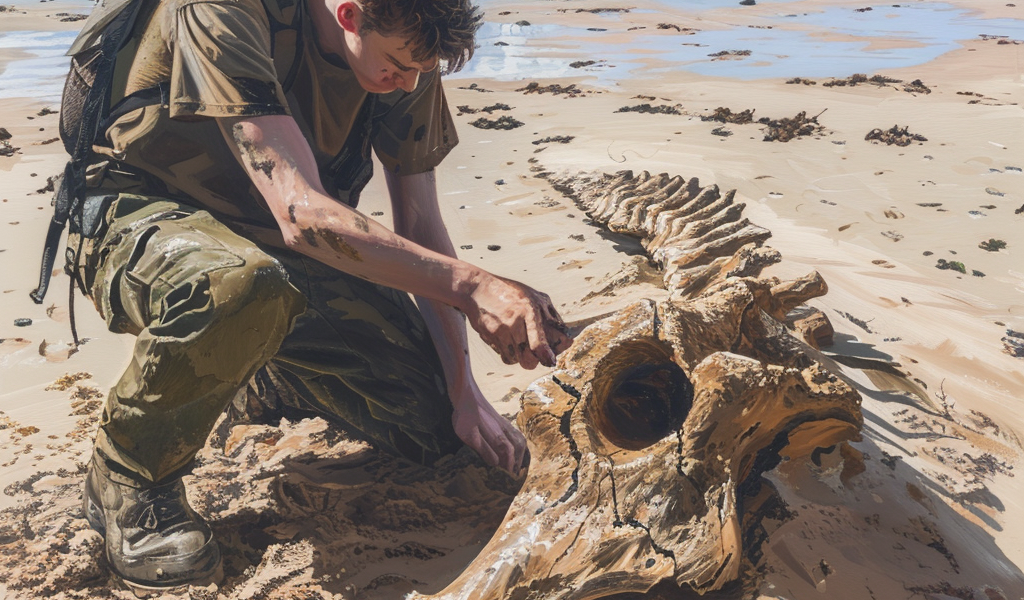Enormous ancient sea reptile identified from amateur fossil find
Scientists have identified what was probably the largest marine reptile ever to swim in the seas – a creature longer than two, nose-to-nose buses. The creature lived around 202 million years ago alongside the dinosaurs. Its fossilised jawbone was found in 2016 by a fossil hunter on a beach in Somerset, UK. In 2020 a father and daughter found another similar jawbone.
Experts now say the fossils are from two giant ichthyosaur reptiles, which could have been 25m long. That is bigger than a huge pliosaur whose skull was found embedded in Dorset cliffs and was in the David Attenborough documentary the Giant Sea Monster.
“Based on the size of the jawbones – one of them over a meter long and the other two metres long – we can work out that the entire animal would have been about 25m long, about as long as a blue whale,” according to Dr Dean Lomax, a palaeontologist at the University of Bristol, who wrote the scientific paper published on Wednesday.
But he says more evidence, like a complete skull and skeleton, is needed to confirm the exact size of the creature because just a few fragments have been found so far. The giant ichthyosaur died out in a mass extinction and the ichthyosaurs that lived after that never reached the enormous size again, he said.
The first glimpse of the creature came in 2016 when fossil hunter Paul de la Salle was scouring Somerset beaches. He has collected fossils for 25 years after being inspired by famous fossilist Steve Etches. Trawling the beach with his wife Carol, he saw what turned out to be the find of a lifetime – the first known jawbone of this giant, marine reptile.
When he talked to Dean Lomax, they suspected they might be on to a major discovery. They published their findings in 2018. But they wanted more evidence to understand just how big the creature had been. “We kept our fingers crossed for more discoveries,” says Dean. In 2020, father and daughter Justin and Ruby Reynolds found what Dean was looking for, 10km down the coast at Blue Anchor. “I was massively impressed – really, really excited. I knew that right at that point we had a second giant jawbone from one of these massive ichthyosaurs just like Paul’s,” Dean says.
Paul rushed to the beach and helped them uncover more. “I dug through all the thick mud. After about an hour, my shovel hit something solid – and this bone came out perfectly preserved,” he says. The team, as well as family members, carried on looking for fragments of the second jaw – the last piece was found in 2022.





